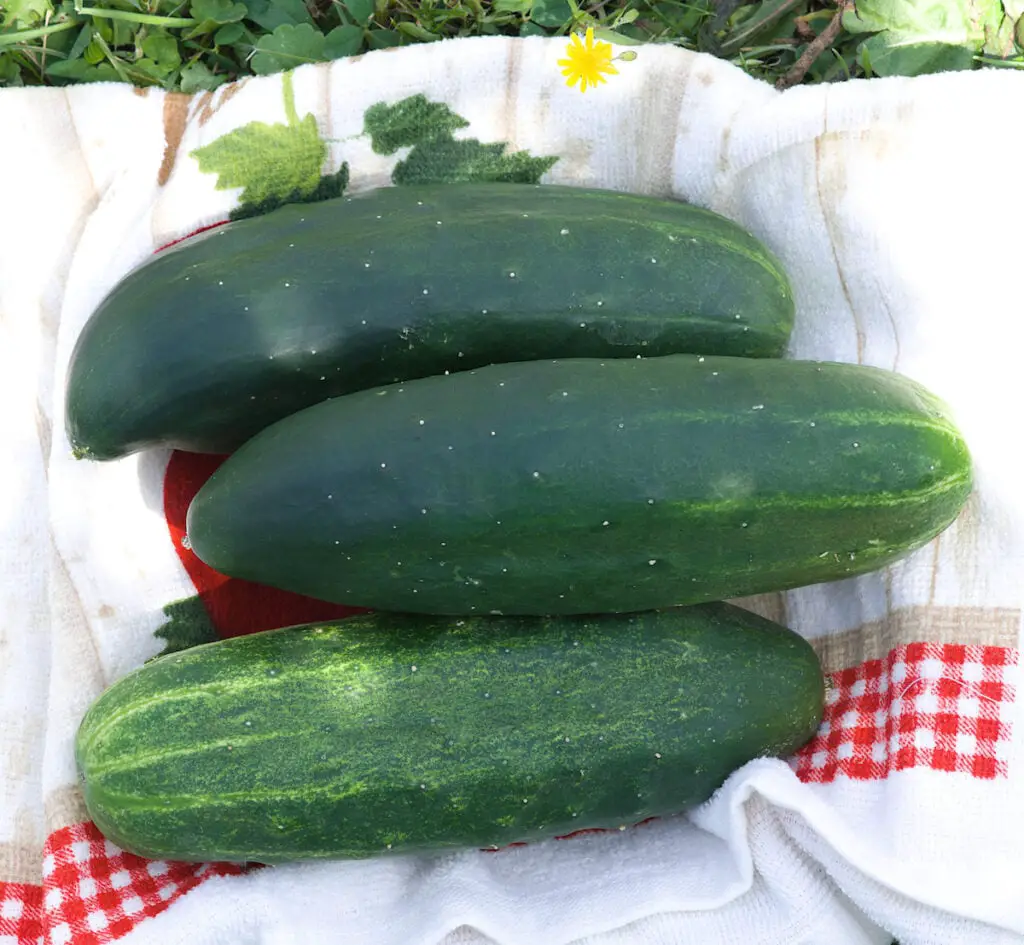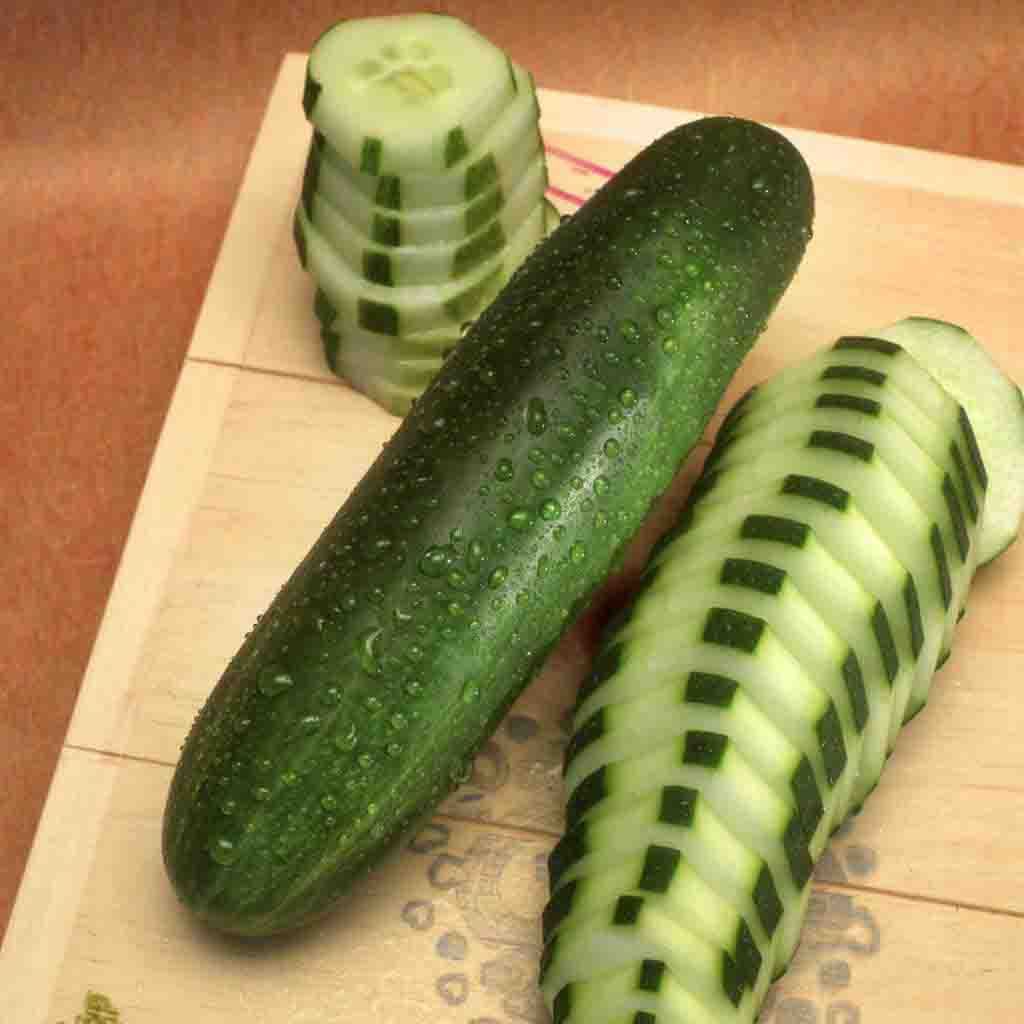So you want to know about the size of muncher cucumbers, huh? Well, you’ve come to the right place! In this comprehensive guide, we’re going to cover everything you need to know about the sizing of muncher cucumbers. From their smallest dimensions to their biggest growth potential, we’ll explore the various factors that contribute to their size and provide you with all the juicy details. Whether you’re a seasoned gardener or just starting out, this guide is sure to satisfy your curiosity and help you grow the perfect muncher cucumbers. So grab a refreshing beverage and let’s dive into the world of muncher cucumber sizes!

Introduction
If you’re a fan of cucumbers, you’ve probably come across the Muncher cucumber variety. These delightful cucumbers, known for their crisp texture and refreshing taste, are a popular choice for both gardeners and consumers alike. In this comprehensive guide, we’ll dive into everything you need to know about Muncher cucumbers, including their characteristics, how to grow them, and the different sizes they can reach. So, if you’re curious about munching on these cucumbers, keep reading!
What are Muncher Cucumbers?
Definition
Muncher cucumbers are a specific variety of cucumber that belongs to the Cucumis sativus species. They are known for their slender shape, crispness, and mild, refreshing flavor. Unlike traditional slicing cucumbers, Muncher cucumbers are typically enjoyed without peeling, making them a convenient and healthy snack.
Characteristics
Muncher cucumbers have several distinct characteristics that set them apart from other cucumber varieties. They are usually green in color, with a glossy skin that is smooth and ridged-free. The flesh of the Muncher cucumber is crunchy and seedless, making it an excellent choice for both raw and cooked preparations. Additionally, these cucumbers are often shorter in length compared to other varieties, which makes them perfect for quick pickling and snacking.

Growing Muncher Cucumbers
Planting
To grow Muncher cucumbers, you first need to prepare a suitable planting area. These cucumbers thrive in well-drained soil that is rich in organic matter. Choose a sunny spot in your garden or allocate space for growing them in containers.
Start by preparing the soil by loosening it with a garden fork or tiller. Remove any weeds or rocks that could hinder the growth of your cucumbers. Once the soil is prepared, plant the Muncher cucumber seeds about 1 inch deep and 6-8 inches apart. Alternatively, you can also opt for seedlings if you prefer a head start.
Watering
Muncher cucumbers require consistent watering to ensure healthy growth. Aim to keep the soil evenly moist throughout the growing season, especially during hot and dry periods. Water deeply but avoid overwatering, as excessive moisture can lead to fungal diseases.
Consider using mulch around the cucumber plants to help retain soil moisture and prevent weed growth. Regularly check the soil moisture levels by sticking your finger about an inch deep into the soil. If it feels dry, it’s time to water your Muncher cucumbers.
Soil Requirements
Muncher cucumbers thrive in well-drained soil with a pH range of 6.0 to 7.0. It’s essential to prepare the soil before planting by incorporating organic matter such as compost or well-rotted manure. This will improve soil fertility and drainage, allowing the roots to access vital nutrients.
Ensure that the soil is loose and friable to promote healthy root development. If your soil is heavy and clayey, consider adding sand or perlite to improve drainage. Regular soil testing can also provide valuable insights into the nutrient levels and pH of your soil, allowing you to amend it accordingly.
Fertilization
Proper fertilization is crucial for the successful growth of Muncher cucumbers. Before planting, incorporate a balanced fertilizer into the soil to provide essential nutrients. Follow the manufacturer’s instructions for the appropriate amount to apply.
During the growing season, you can provide additional nutrients through side dressing. This involves applying a slow-release or water-soluble fertilizer around the base of the plants, avoiding direct contact with the stems. Regularly monitor the plants for any signs of nutrient deficiencies, such as yellowing leaves, and adjust your fertilization routine accordingly.
Average Size of Muncher Cucumbers
Length
Muncher cucumbers typically grow to an average length of 6 to 8 inches, making them ideal for snacking and salads. Their shorter length is advantageous as it reduces the chances of the cucumbers becoming seedy and ensures a crisp texture throughout.
Diameter
In terms of diameter, Muncher cucumbers are usually around 1 to 2 inches wide. This moderate width allows for easy slicing and incorporating them into various culinary preparations.

Factors Affecting the Size of Muncher Cucumbers
Genetics
The size of Muncher cucumbers is primarily influenced by their genetics. Each cucumber variety has its inherent growth characteristics, including size, shape, and productivity. When selecting Muncher cucumber seeds or seedlings, it’s essential to choose a reputable source known for producing high-quality, true-to-type plants.
Environmental Conditions
Environmental factors play a crucial role in determining the size of Muncher cucumbers. Adequate sunlight, warmth, and appropriate temperatures promote healthy growth and development. Insufficient sunlight or extreme temperature fluctuations can negatively impact the cucumber’s size and overall quality.
Cultural Practices
Cultural practices, such as proper watering, fertilization, and pruning, can greatly influence the size of Muncher cucumbers. Consistent and adequate watering ensures optimal hydration and nutrient uptake, which supports healthy growth. Providing the necessary nutrients through fertilization and removing any competing weeds can also enhance the cucumber’s size.
Pruning is another cultural practice that can impact the size of Muncher cucumbers. Removing excess foliage and lateral vines allows the plant to focus its energy on fruit production, resulting in larger cucumbers.
Harvesting Muncher Cucumbers
When to Harvest
Knowing the right time to harvest your Muncher cucumbers is essential to ensure the best flavor and texture. Generally, these cucumbers are harvested when they reach their mature size, which is around 6 to 8 inches in length. However, you can also pick them earlier if you prefer smaller cucumbers for pickling or if you desire a more tender eating experience.
Signs of Maturity
To determine whether your Muncher cucumbers are ready for harvest, observe their color and texture. The skin should be a vibrant, glossy green, indicating maturity. Additionally, gently squeeze the cucumber – it should feel firm but not too hard, with a slight give when pressed.
Harvesting Techniques
When harvesting Muncher cucumbers, use a pair of clean gardening shears or a sharp knife. Cut the cucumber stem about 1 inch above the fruit to avoid damaging the plant. Be careful not to twist or pull the cucumbers, as this can cause injury to the plant or result in uneven ripening.

Utilizing Different Sizes of Muncher Cucumbers
Small Cucumbers
Small Muncher cucumbers, typically around 4 to 6 inches in length, are perfect for making pickles or adding a refreshing crunch to salads. Their compact size makes them ideal for snacking on the go or garnishing sandwiches.
Medium Cucumbers
Medium-sized Muncher cucumbers, ranging from 6 to 8 inches, are versatile in the kitchen. They can be sliced and added to salads, diced for salsas, or used as a crisp and refreshing topping for burgers and sandwiches.
Large Cucumbers
When your Muncher cucumbers grow beyond 8 inches, they can still be enjoyed. However, larger cucumbers tend to have more developed seeds, so scooping them out may be necessary if you prefer a seedless option. Large Muncher cucumbers are excellent for stuffing or creating homemade cucumber roll-ups filled with delicious ingredients.
Best Storage Practices for Muncher Cucumbers
Refrigeration
To maintain the freshness and crispness of Muncher cucumbers, it’s best to store them in the refrigerator. Place the cucumbers in a perforated plastic bag to allow for air circulation and prevent moisture buildup. Properly stored, Muncher cucumbers can stay fresh for up to one week.
Freezing
If you have an abundance of Muncher cucumbers, you can freeze them for later use. However, it’s important to note that freezing can change the cucumber’s texture, making it softer. To freeze, slice the cucumbers and blanch them in boiling water for a few seconds before transferring them to an airtight container or freezer bag. Frozen Muncher cucumbers are best used in cooked dishes such as stir-fries or soups.
Pickling
One popular way to preserve Muncher cucumbers is through pickling. You can create delicious pickles by submerging the cucumbers in a brine made of vinegar, water, salt, and desired spices. Store the pickled cucumbers in sterilized jars in the refrigerator, and they’ll last for several weeks, ready to be enjoyed at any time.

Selection Criteria for Muncher Cucumbers by Size
Culinary Uses
When selecting Muncher cucumbers by size, consider the specific culinary uses you have in mind. Smaller cucumbers are perfect for pickling and snacking, while medium-sized cucumbers can be used in a variety of dishes. Larger cucumbers, although potentially more seedy, are great for stuffing or creating unique culinary creations.
Personal Preferences
Your own personal preferences should also be taken into account when choosing Muncher cucumbers by size. If you enjoy a more tender cucumber experience, opt for smaller sizes. If you prefer a larger, crunchier cucumber or want to experiment with different recipes, larger sizes may be preferable.
Recipe Requirements
Lastly, consider the recipe requirements when selecting Muncher cucumbers by size. Some recipes may call for specific size specifications, whether it’s for pickling or stuffing. Ensuring that your Muncher cucumbers match the desired size can help create the perfect dish.
Conclusion
In conclusion, Muncher cucumbers are a delightful cucumber variety known for their crispness, mild flavor, and versatility in the kitchen. Whether you choose to grow them yourself or find them at your local market, understanding their characteristics, size variations, and best utilization methods is essential for maximizing your cucumber experience. So, the next time you’re craving a refreshing crunch or planning your next culinary masterpiece, consider the size of Muncher cucumbers and all the possibilities they offer. Happy munching!



